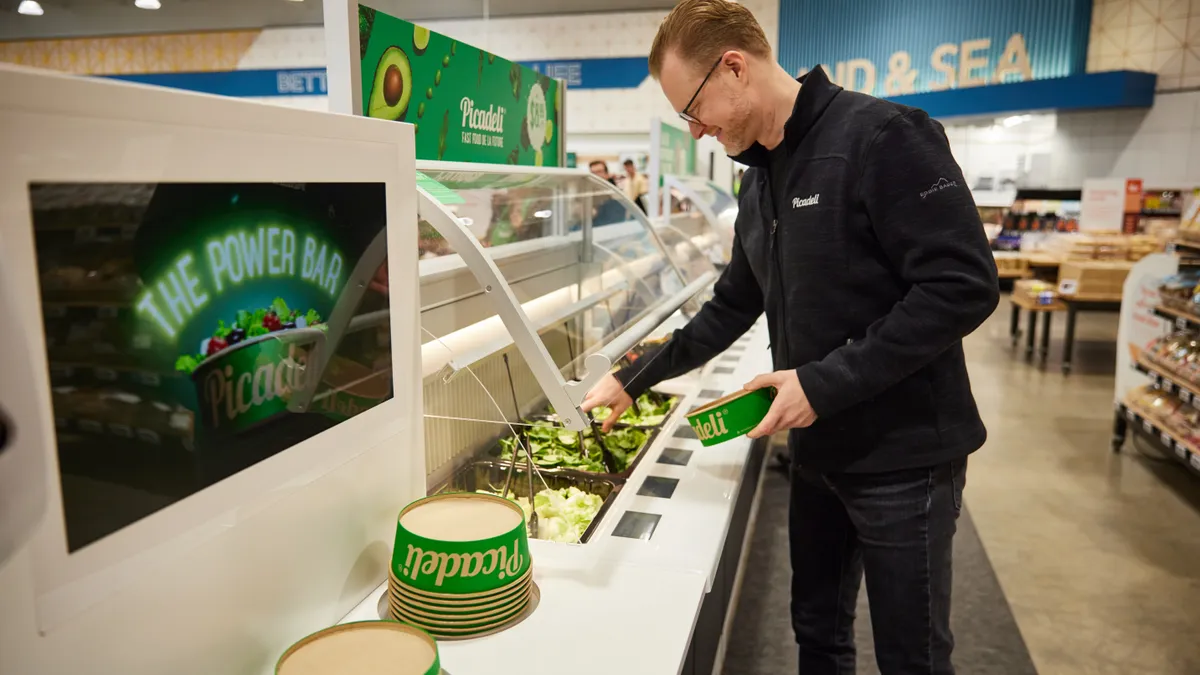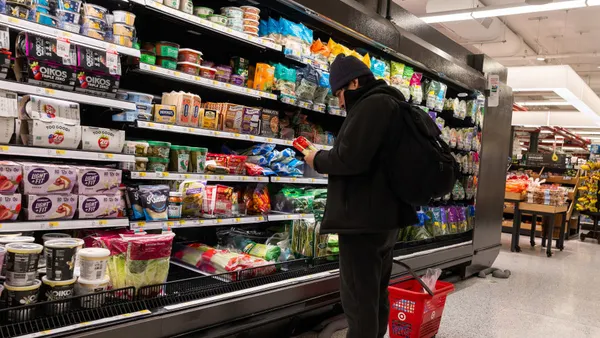From in-store restaurants to revamped deli selections, grocers have been busy this year cooking up new ways to feed consumers hungry for meal solutions.
ShopRite, for example, has been expanding its in-store Fresh to Table concept, which serves as a one-stop-shop for ready-to-cook, ready-to-heat and ready-to-eat options and includes marketing messages like “Rah, Rah, Rotisserie” and “Made with love for later.”
Meanwhile, Schnuck Markets has been rolling out technology-driven salad bars, which use artificial intelligence to track sales patterns and determine when to order products and also feature digital tags, at dozens of its stores.
These efforts have come at a time when more consumers are combining scratch cooking with prepared foods from grocery stores — a trend that FMI – The Food Industry Association expects to continue into next year.
To encourage consumers to skip restaurants for lunch or dinner, some grocers, like Publix, are jumping on food trends or limited-time meal offerings to grab shoppers’ attention.
But not all of the experiments in foodservice have proven fruitful. For example, Kroger recently closed the in-store ghost kitchens that Kitchen United was operating.
“The few customers that used it loved it, but it just wasn't enough,” Kroger Chairman and CEO Rodney McMullen told investors during an earnings call last month.
As experimentation continues, more foodservice novelties are on the horizon for the grocery industry.
The recently announced merger of Dom’s Kitchen & Market and Foxtrot Market will be one for the grocery industry to watch as the two beloved Chicago brands, which both place a heavy emphasis on in-store experiences and foodservice, integrate their offerings.
As foodservice innovation continues, here’s a collection of stories examining the range of strategies grocers have turned to this year to boost meal options.














